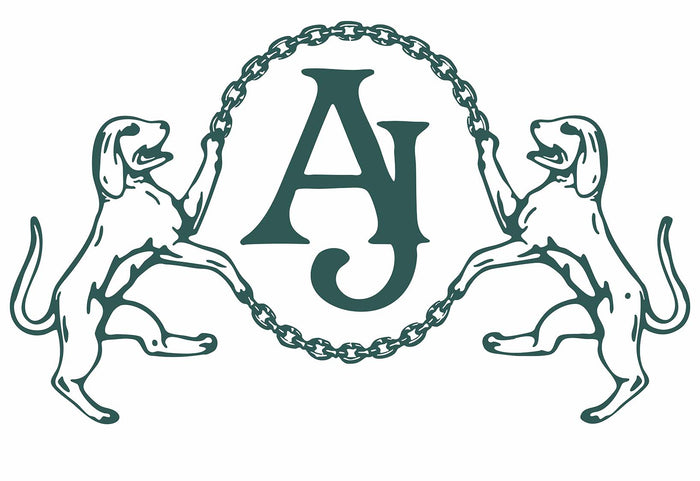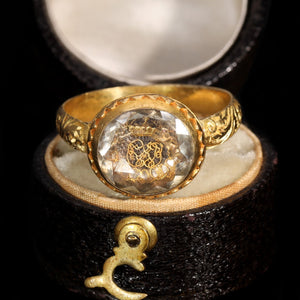In the world of antique jewellery, few challenges are as daunting as determining whether that Georgian signet or Victorian mourning ring is genuine or a clever reproduction. Drawing from C.W. King's authoritative 1872 work on antique gems and rings, we'll explore authentication techniques that remain surprisingly relevant for today's collectors—along with some eye-opening revelations about forgeries that were already fooling buyers 150 years ago.
The Ancient Art of Deception
Perhaps the most startling discovery in King's treatise is that forgery was already widespread in the Victorian era. He documents that medieval and Renaissance-style rings were being reproduced extensively in European workshops, with skilled artisans creating convincing replicas to meet collector demand. Even more sophisticated were workshops in Naples where craftsmen would take genuine ancient rings with plain faces and engrave them with designs copied from Sicilian medals, creating pieces that combined authentic old metal with new artistry.
But deception in the ring trade goes back millennia. King relates discovering an ancient Greek ring that appeared solid until the gem popped out during wax sealing, revealing the hollow behind filled with lead foil—a fraud perpetrated perhaps 2,000 years ago by an enterprising dealer looking to maximise profits.
The Hammer Test: A Fundamental Truth
One of King's most valuable insights for authentication is beautifully simple: genuine ancient rings were always wrought with hammers, never cast or filed. This single observation can eliminate countless reproductions from consideration.
Ancient goldsmiths worked with portable tools, shaping pure, ductile metal entirely by hammering—a technique that continued in many traditional workshops worldwide. The resulting rings have a distinctive character—they're often hollow and lightweight, sometimes easily crushed, but with a finish that only hammer-work can achieve.
Weight and Construction Clues
Genuine antique rings often surprise modern collectors with their construction:
- Greek and early Roman rings: Usually hollow and remarkably light
- Byzantine and late Roman rings: Can be surprisingly heavy (some weighing 2+ ounces)
- Medieval rings: Often angular in outline, designed for the little finger
King notes that when L. Piso needed a new ring in ancient Spain, he simply had his broken one weighed and reworked—illustrating how these hollow rings could be "crushed by some mischance" but easily remade.
Material Matters
The choice of metals provides important dating clues:
Silver rings became common under the Roman Empire as the mark of freed slaves, explaining their abundance. However, be cautious of pieces with:
- Extremely base metal matching late Roman coinage standards
- Niello (black inlay) work with simple inscriptions like "PAX.AVE"
- Angular shapes suited only for the little finger
Bronze rings were often gilded to pass for gold. King notes finding examples where traces of gold leaf remained in protected areas—ancient "costume jewellery" meant to impress then as now.
The Cameo Controversy
Here's a crucial fact for collectors: antique rings set with fine cameos are extraordinarily rare. King searched the extensive Galleria collection in Florence and found only ONE genuine example—a racing enthusiast's ring featuring his wife's portrait and his horses named AMOR and OSPIS.
This scarcity exists because ancient rings served as functional signets, not mere ornaments. If you encounter a supposedly ancient ring with an elaborate cameo, extreme scepticism is warranted.
Red Flags for Modern Collectors
Based on King's observations, watch for these warning signs:
- Perfect polish: Ancient gems show wear. Overzealous repolishing destroys both authenticity markers and artistic detail
- Cast or filed surfaces: Look for file marks or casting seams—ancient rings were hammer-wrought
- Unusual thinness: Ancient stones were typically thick; thin gems suggest later recutting
- Too many cameos: The ratio of genuine medieval treasures is about 60 intaglios to 3 cameos
- Medieval ecclesiastical rings: These were already being extensively reproduced in European workshops by the 1870s
The Engraving Evidence
Genuine ancient engraving has distinctive characteristics:
- Deep drill work for major hollows
- Diamond-point detail work
- Internal polish achieved during cutting (not added later)
- Absence of wheel-cut uniformity (except in late Imperial work)
King particularly notes that late Roman work shows clear wheel-cutting—a technique that replaced traditional methods as the Empire declined.
A Victorian Warning for Modern Times
Writing in 1872, King cautioned that ecclesiastical rings commanded such high prices that reproduction was rampant, requiring examination "with a very suspicious and critical eye." His advice rings even truer today when a genuine Georgian mourning ring or Roman signet can fetch thousands at auction.
The irony is striking: Victorian collectors worried about medieval reproductions, while we now must also guard against Victorian ones. Yet King's fundamental insights remain sound. True antiquity reveals itself through construction methods that modern workshops rarely bother to replicate—the patient hammer work, the hollow construction, the wear patterns of centuries.
As you examine your next potential acquisition, remember King's image of the ancient goldsmith working with simple tools to create rings that would outlast empires. In those hammer marks and construction details lie the true authentication secrets that no modern reproduction can fully replicate.
For collectors seeking genuine antique rings from the Georgian, Victorian, and Edwardian eras, understanding these authentication principles provides invaluable protection in today's complex marketplace.


